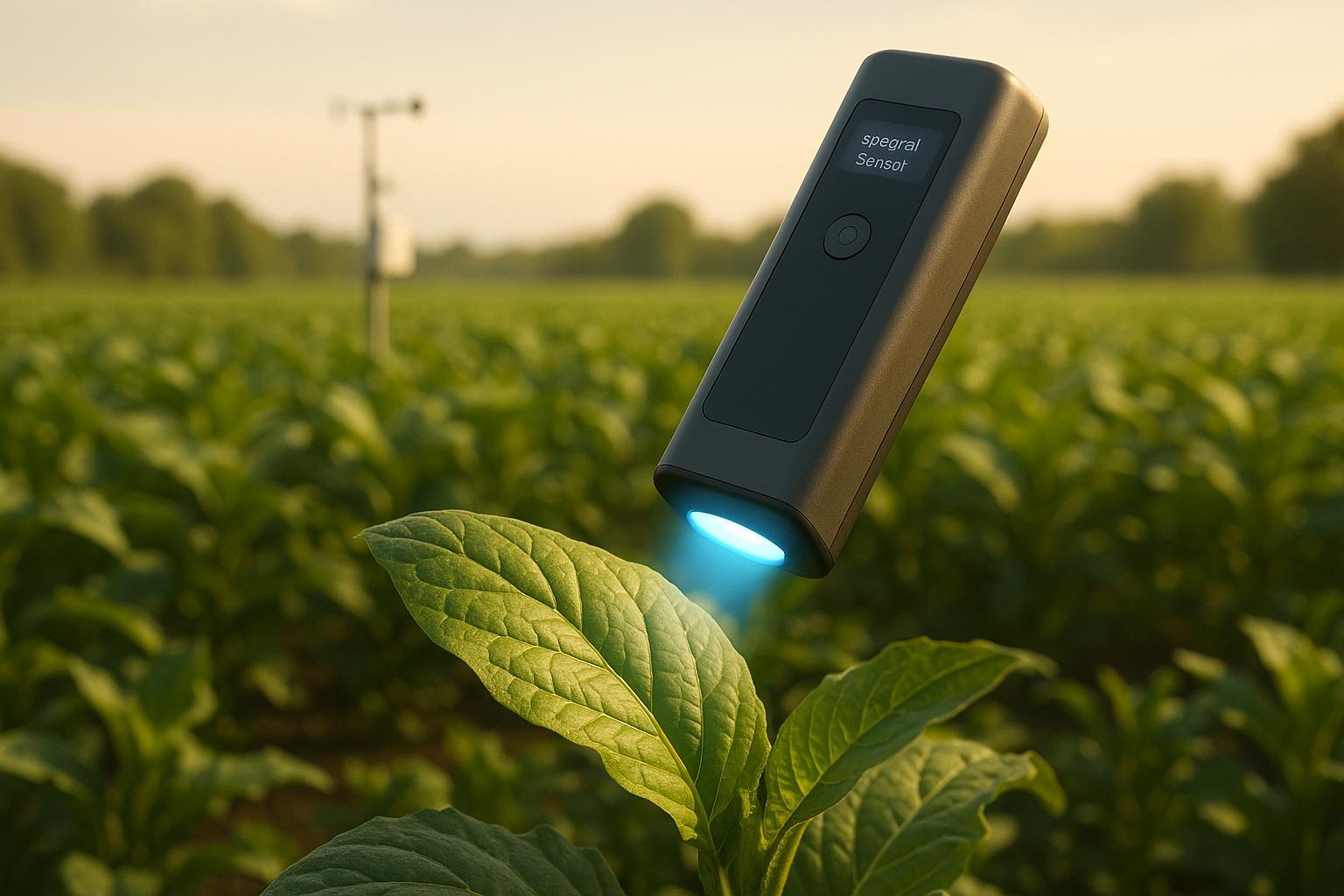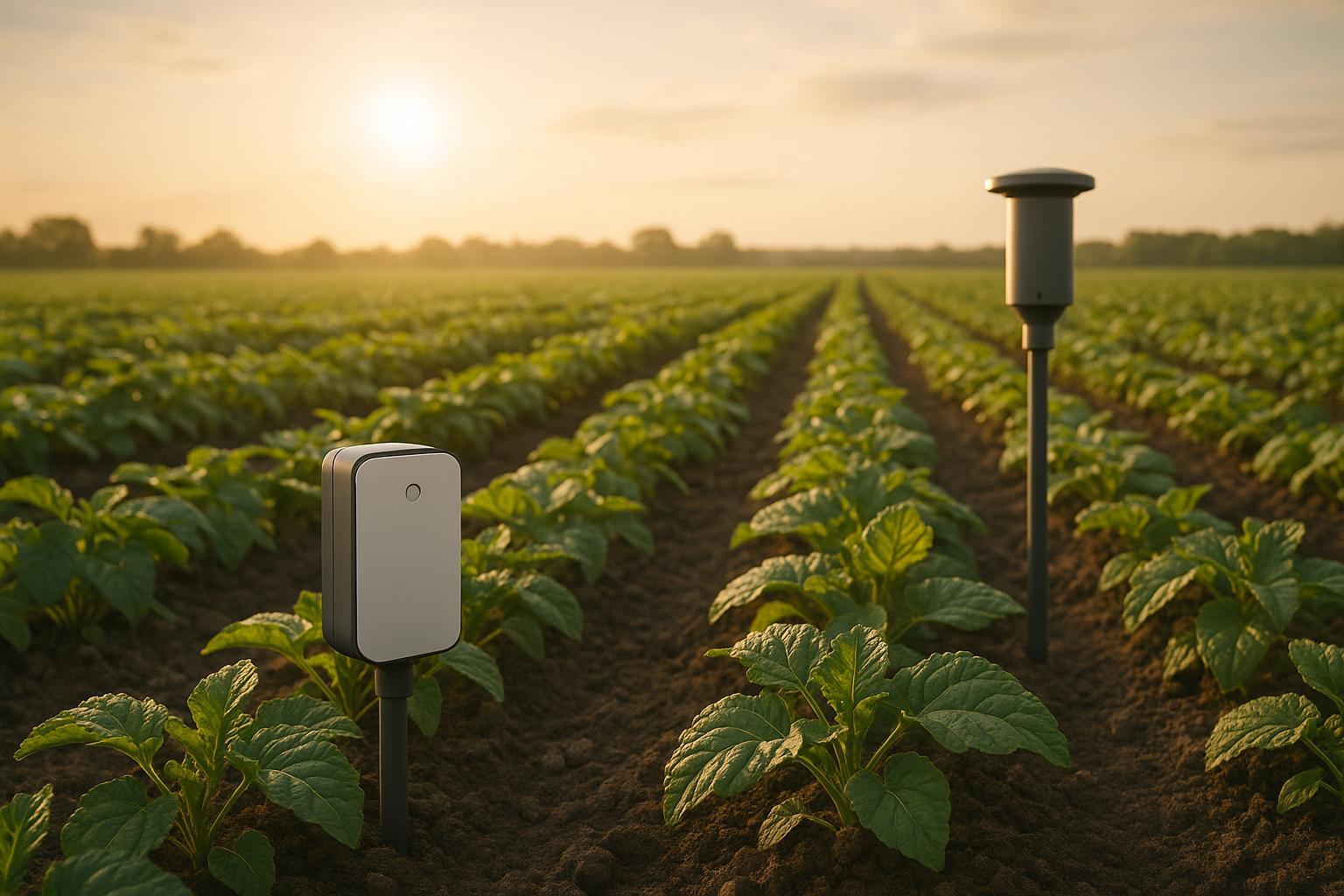Effective Strategies for Asiatic Garden Beetle Control

Content Outline
- Introduction
- A. Understanding Asiatic Garden Beetle
- B. Damage caused by Asiatic Garden Beetle
- C. Methods of Asiatic Garden Beetle Control
- 1. Natural predators
- 2. Organic control methods
- 3. Chemical control options
Introduction
Welcome to our guide on Asiatic garden beetle control. In this article, we will explore effective strategies for managing and preventing infestations of the Asiatic garden beetle. These pests can cause significant damage to gardens and landscapes, making control measures essential for maintaining healthy plants.
Key factors to consider for Asiatic garden beetle control:
- Identification: Before implementing control measures, it is crucial to accurately identify Asiatic garden beetles. These beetles are known for their distinctive markings and feeding habits. For more information on identifying Asiatic garden beetles, visit Invasive.org.
- Preventive measures: Implementing preventive strategies is key to minimizing Asiatic garden beetle infestations. This may include proper sanitation practices and selecting beetle-resistant plants. For a comprehensive list of preventive measures, refer to University of Minnesota Extension.
- Control options: There are various control options available for managing Asiatic garden beetles, ranging from cultural controls to chemical treatments. It is important to weigh the tradeoffs of each method to determine the most suitable approach for your garden. Explore different control options at University of Kentucky Entomology.
By understanding the key factors and tradeoffs involved in Asiatic garden beetle control, you can effectively protect your garden from potential damage. Stay tuned for more in-depth insights on managing and preventing infestations of Asiatic garden beetles.
When it comes to asiatic garden beetle control, understanding the behavior and lifecycle of the Asiatic Garden Beetle is crucial. This invasive pest poses a threat to gardens and crops, making it essential to implement effective control measures.
Key Factors to Consider:
- Life Cycle: The Asiatic Garden Beetle has a life cycle consisting of egg, larva, pupa, and adult stages. Understanding these stages is essential for effective control.
- Damage: Asiatic Garden Beetles feed on the roots of plants, leading to stunted growth and decreased yield. Farmers and gardeners need to be vigilant to prevent significant damage.
- Control Methods: Implementing control methods such as biological control, cultural practices, and chemical pesticides can help manage Asiatic Garden Beetle populations.
- Preventive Measures: Taking proactive steps such as crop rotation, using row covers, and maintaining healthy soil can help prevent infestations of Asiatic Garden Beetles.
By understanding the behavior and lifecycle of the Asiatic Garden Beetle, implementing asiatic garden beetle control measures becomes more effective. Stay informed and proactive to protect your garden or crops from this invasive pest.
Description of the Beetle
The asiatic garden beetle (Maladera castanea) is a common pest that can wreak havoc on gardens and crops if left unchecked. Understanding the physical characteristics and behavior of this beetle is essential for effective asiatic garden beetle control.
- Physical Description: The asiatic garden beetle is typically brown or chestnut in color and measures around 0.5 inches in length. It has a distinct oval shape and six legs, with antennae that are shorter than its body.
- Habitat: These beetles are commonly found in gardens, lawns, and agricultural fields across Asia and North America. They prefer moist soil conditions and are most active during the summer months.
- Feeding Habits: Asiatic garden beetles feed on a variety of plants, including vegetables, fruits, and ornamental flowers. Their larvae can cause significant damage to roots and underground plant parts.
- Life Cycle: The life cycle of the asiatic garden beetle consists of four stages: egg, larva, pupa, and adult. Understanding this cycle is crucial for implementing effective control measures.
When it comes to asiatic garden beetle control, there are several strategies that can be employed:
- Cultural Control: Practices such as crop rotation, mulching, and proper irrigation can help reduce asiatic garden beetle populations.
- Biological Control: Introducing natural predators or parasites of the asiatic garden beetle, such as nematodes or certain fungi, can help manage infestations.
- Chemical Control: In severe cases, the use of insecticides approved for asiatic garden beetle control may be necessary. However, it is important to follow safety guidelines and consider the environmental impact.
By understanding the description, behavior, and control options for the asiatic garden beetle, gardeners and farmers can effectively protect their crops and plants from damage.
🚀 Ready to Reinvent Your Garden?
Join thousands of homeowners who have transformed their gardens using our AI design tool. Upload one photo to explore endless possibilities.
Get your AI garden designs →Life Cycle of the Beetle
Understanding the life cycle of the beetle is crucial for effective asiatic garden beetle control. Here is a breakdown of the key stages:
- Egg Stage: The life cycle of a beetle begins with the laying of eggs by adult beetles. These eggs are typically laid in soil or on plant roots. Source
- Larval Stage: Once the eggs hatch, beetle larvae emerge. During this stage, larvae feed voraciously on plant roots, causing damage to vegetation. Source
- Pupal Stage: After the larval stage, beetles enter the pupal stage where they undergo metamorphosis. The pupae are often found in the soil. Source
- Adult Stage: Finally, the adult beetles emerge from the pupal stage. These beetles are capable of reproduction and continue the life cycle by laying eggs. Source
It is essential to intervene at various stages of the beetle life cycle to prevent extensive damage to plants and crops. Effective asiatic garden beetle control strategies can help mitigate the impact of these pests on agricultural and garden settings.
Damage caused by Asiatic Garden Beetle
The Asiatic Garden Beetle, also known as Maladera castanea, is a common pest in gardens and agricultural settings. This beetle feeds on the roots of various plants, causing significant damage to crops and ornamental plants alike. Here are some key points to consider about the damage caused by Asiatic Garden Beetle and how to control it:
- Root Damage: Asiatic Garden Beetle larvae feed on plant roots, leading to reduced nutrient uptake and weakened plant health. This can result in stunted growth and decreased crop yields.
- Foliar Damage: Adult Asiatic Garden Beetles feed on plant leaves, causing visible damage such as skeletonization and defoliation. This can further stress plants and make them more susceptible to diseases.
- Control Measures: To mitigate the damage caused by Asiatic Garden Beetle, it is crucial to implement effective control measures. This can include cultural practices, biological control methods, and the use of chemical pesticides. For comprehensive information on asiatic garden beetle control, refer to reputable sources such as the Purdue Extension.
In conclusion, understanding the damage caused by Asiatic Garden Beetle is essential for maintaining healthy plants and maximizing yields. By implementing appropriate control strategies, gardeners and farmers can effectively manage this pest and protect their crops. Stay informed and proactive in your approach to asiatic garden beetle control.
Effects on Plants
When it comes to asiatic garden beetle control, understanding the effects on plants is crucial. Here are some key factors to consider:
- Damaging Effects: The asiatic garden beetle larvae can cause significant damage to plants by feeding on the roots, leading to stunted growth and decreased overall health. According to PestWorld, these beetles can be particularly destructive in gardens and agricultural settings.
- Impact on Crop Yields: Studies have shown that infestations of asiatic garden beetles can result in yield losses of up to 30% in certain crops. Farmers and gardeners alike must be vigilant in monitoring and controlling these pests to protect their harvest. For more information on crop impact, visit Agriculture.com.
- Tradeoffs in Control Methods: While chemical pesticides can effectively control asiatic garden beetles, they may also have negative effects on non-target plants and beneficial insects. It's important to weigh the tradeoffs between different control methods to minimize environmental impact. Learn more about eco-friendly pest control options at EPA.gov.
By understanding the effects of asiatic garden beetles on plants and considering the tradeoffs involved in control methods, gardeners and farmers can make informed decisions to protect their crops and promote healthy plant growth.
Economic impact
Controlling the population of Asiatic garden beetles can have a significant economic impact on agricultural and horticultural industries. These beetles are known to feed on a wide variety of plants, including soybeans, corn, and ornamental plants, leading to crop damage and reduced yields.
Key factors influencing economic impact:
- Cost of control methods: Implementing effective control measures such as biological control or chemical treatments can incur significant costs for farmers and gardeners.
- Yield losses: Infestations of Asiatic garden beetles can result in substantial yield losses for key crops, impacting the overall productivity of farms and gardens.
- Market value: The presence of Asiatic garden beetles can affect the market value of affected crops and plants, potentially leading to decreased profits for producers.
According to a study by the USDA, Asiatic garden beetles have been estimated to cause millions of dollars in economic losses annually in the United States alone. The costs associated with managing and mitigating the impact of these pests highlight the importance of effective asiatic garden beetle control strategies.
When it comes to effective asiatic garden beetle control, it is crucial to employ a combination of methods to tackle these pests. Here are some methods that can help in managing and preventing infestations:
- Handpicking: One of the simplest and most environmentally friendly ways to control asiatic garden beetles is by physically removing them from plants. Regularly inspecting plants and manually picking off the beetles can help reduce their numbers significantly. Source
- Row Covers: Covering plants with row covers can act as a physical barrier, preventing asiatic garden beetles from reaching the plants and laying eggs. This method is particularly effective for protecting vulnerable plants during the growing season. Source
- Biological Controls: Introducing natural predators of asiatic garden beetles, such as parasitic nematodes or certain bird species, can help in keeping their populations in check. These biological controls offer a sustainable and eco-friendly approach to pest management. Source
- Chemical Treatments: In severe infestations, chemical insecticides may be necessary to control asiatic garden beetles. It is important to choose products that are specifically targeted towards these beetles and to follow the application instructions carefully to minimize environmental impact. Source
By combining these methods of asiatic garden beetle control, gardeners can effectively manage infestations while minimizing the negative impact on the environment. Each method has its own tradeoffs, and the choice of control measures should be based on the specific needs of the garden and the level of infestation.
When it comes to controlling the Asiatic garden beetle, understanding the role of natural predators can be crucial. These predators play a significant part in maintaining the balance of the ecosystem and controlling the population of garden pests.
One of the most effective natural predators of the Asiatic garden beetle is the ground beetle (source). Ground beetles are voracious hunters that feed on a wide range of insects, including the larvae of the Asiatic garden beetle. By introducing ground beetles into your garden, you can help keep the beetle population in check.
Another important predator to consider is the tachinid fly (source). Tachinid flies are parasitic insects that lay their eggs on the Asiatic garden beetle larvae. Once the eggs hatch, the fly larvae feed on the beetle larvae, ultimately leading to their demise.
It is essential to create a habitat that attracts these natural predators to your garden. Planting diverse vegetation can help provide shelter and food sources for ground beetles and tachinid flies. Additionally, avoiding the use of pesticides is crucial as it can harm these beneficial insects and disrupt the natural pest control process.
By encouraging the presence of natural predators like ground beetles and tachinid flies in your garden, you can effectively manage the Asiatic garden beetle population without resorting to harmful chemicals. Understanding and promoting the role of natural predators is a sustainable and eco-friendly approach to Asiatic garden beetle control.
Organic Control Methods
When it comes to effectively managing the asiatic garden beetle, organic control methods offer a sustainable and environmentally friendly alternative. These methods focus on leveraging natural solutions to mitigate the impact of these pests on your garden. Here are some key organic control methods to consider:
- Beneficial Insects: Introducing predators such as ladybugs and praying mantises can help keep asiatic garden beetle populations in check.
- Neem Oil: Applying neem oil, a natural insecticide derived from the neem tree, can disrupt the life cycle of asiatic garden beetles without harming beneficial insects.
- Companion Planting: Planting pest-repelling herbs like basil and catnip near susceptible plants can deter asiatic garden beetles from infesting your garden.
According to a study by the Organic Agriculture Research Institute, organic control methods have been shown to be just as effective as chemical pesticides in managing asiatic garden beetle populations. Furthermore, these methods have the added benefit of promoting biodiversity and soil health in your garden.
While organic control methods may require more diligence and patience compared to conventional pesticides, the long-term benefits are undeniable. By incorporating these sustainable practices into your gardening routine, you can create a healthy and thriving ecosystem that is resilient to pest pressures.
Chemical Control Options for Asiatic Garden Beetle Control
When dealing with the challenge of Asiatic garden beetle control, one of the effective approaches is through chemical control options. While there are various methods available, it is important to understand the tradeoffs involved in using chemicals for pest management.
1. Insecticides
- Insecticides are a common choice for controlling Asiatic garden beetles. They can provide quick and targeted results.
- However, overreliance on insecticides may lead to the development of resistance in the beetle population over time.
🎨 Visualize Your Dream Garden Today!
Transform any outdoor space into a professional landscape design in minutes. Just upload a photo, choose your style, and let our AI do the rest.
Start your garden transformation now →2. Systemic Treatments
- Systemic treatments involve applying chemicals to the soil or plant roots, which are then absorbed by the plant to deter beetles.
- While systemic treatments can be effective, they may also pose risks to non-target organisms and the environment.
3. Biological Control
- Biological control options, such as using natural predators or pathogens, offer an eco-friendly alternative to chemical pesticides.
- However, biological control methods may require more time to establish and may not provide immediate results.
It is essential to weigh the benefits and drawbacks of each chemical control option for Asiatic garden beetle management. Integrating multiple strategies, such as rotating insecticides and incorporating biological controls, can help mitigate the risks associated with chemical treatments while effectively managing the beetle population.
Related Articles

AI and Edge Computing: Transforming Pest Management
Explore how AI and edge computing are revolutionizing pest management, boosting crop yields while minimizing pesticide use and costs.

Big Data for Climate-Specific Pest Control
Explore how big data analytics revolutionizes pest control by enabling real-time, climate-specific strategies for farmers and gardeners.

Revolutionizing Landscape Design with Artificial Intelligence: Trends, Success Stories, and Future Prospects
Explore the impact of artificial intelligence on landscape design, including current trends, successful case studies, challenges, and future prospects. Discover how AI is reshaping outdoor spaces.

Data Fusion for Plant Disease Detection
Explore how data fusion combines spectral and environmental data to enhance plant disease detection, improving accuracy and early diagnosis.

How AI Sensors Sync Data for Pest Control
Explore how AI sensors are revolutionizing pest control with real-time data syncing and precise detection for effective crop protection.

FAQs on AI Pest Prediction Models
Explore how AI pest prediction models revolutionize pest management, offering early detection, reduced pesticide use, and proactive gardening solutions.